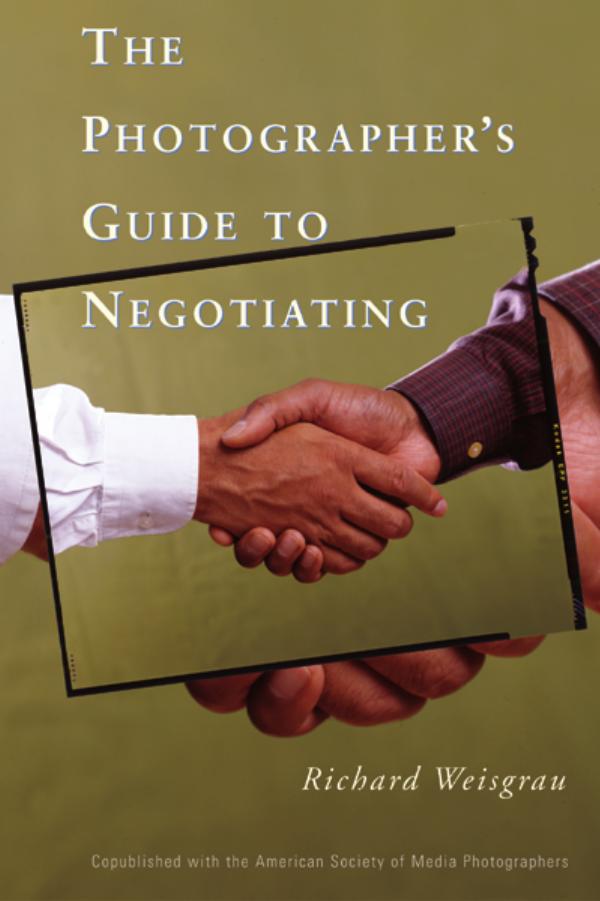The Photographer's Guide to Negotiating by Richard Weisgrau

Author:Richard Weisgrau
Language: eng
Format: epub, pdf
Publisher: Allworth
Published: 2005-06-30T16:00:00+00:00
USAGE AND VALUE
In its simplest form, usage can be divided into four basic categories: limited, unlimited, exclusive, and nonexclusive. The categories can be put into real-world terms easily by using the magazine marketplace as an example.
Upper-tier magazines such as Time, Newsweek, and BusinessWeek require some exclusive categories of rights. For a cover, they insist upon exclusive rights for any purpose and for all time. That is “unlimited exclusive.” For inside use, they insist upon exclusive use for a limited period of time, but they make additional payment for additional editorial uses after the period of exclusivity. That is an example of exclusive rights limited by time and specific use. These magazines generally pay three to four times the inside, full-page space rate for the cover. So the difference between all rights exclusivity and specific-use exclusivity for a limited period of time is a 300- to 400-percent increase. Using a similar approach, you can formulate a percentage increase for different levels of rights in advertising and corporate negotiations.
Lower-tier magazines will usually want nonexclusive rights limited to one use in one issue of the magazine. This limited, nonexclusive use will not command a high fee when compared to the cover of an upper-tier magazine. However, when a publisher wants to run your images on a nonexclusive basis but in several issues of one magazine, or in different magazines, the value increases.
To better understand how to establish relative values around the four categories—limited, unlimited, exclusive, and nonexclusive—you must understand the parameters of the terms. “Exclusive” means that the person to whom you grant the rights can use those rights, but no one else can. You can assign all rights or any number of rights exclusively. For example, you could assign print media rights on an exclusive basis, so no one else can use the image in print media. “Limited” means that there are restrictions on the use. What restrictions might there be? Time, number of copies printed, and region are good examples. Obviously, the opposite terms, “non-exclusive” and “unlimited” have opposite parameters. Regardless of the parameters, the concept is that the more you buy the more it costs.
Download
The Photographer's Guide to Negotiating by Richard Weisgrau.pdf
This site does not store any files on its server. We only index and link to content provided by other sites. Please contact the content providers to delete copyright contents if any and email us, we'll remove relevant links or contents immediately.
| Photo Essays | Photojournalism |
Shoot Sexy by Ryan Armbrust(17133)
Portrait Mastery in Black & White: Learn the Signature Style of a Legendary Photographer by Tim Kelly(16478)
Adobe Camera Raw For Digital Photographers Only by Rob Sheppard(16380)
Photographically Speaking: A Deeper Look at Creating Stronger Images (Eva Spring's Library) by David duChemin(16151)
Bombshells: Glamour Girls of a Lifetime by Sullivan Steve(13100)
Art Nude Photography Explained: How to Photograph and Understand Great Art Nude Images by Simon Walden(12339)
Perfect Rhythm by Jae(4616)
Pillow Thoughts by Courtney Peppernell(3382)
The Book of Joy by Dalai Lama(3212)
Good by S. Walden(2909)
The Pixar Touch by David A. Price(2736)
Fantastic Beasts: The Crimes of Grindelwald by J. K. Rowling(2540)
A Dictionary of Sociology by Unknown(2516)
Humans of New York by Brandon Stanton(2376)
Read This If You Want to Take Great Photographs by Carroll Henry(2299)
Stacked Decks by The Rotenberg Collection(2266)
On Photography by Susan Sontag(2126)
Photographic Guide to the Birds of Indonesia by Strange Morten;(2086)
Insomniac City by Bill Hayes(2080)
